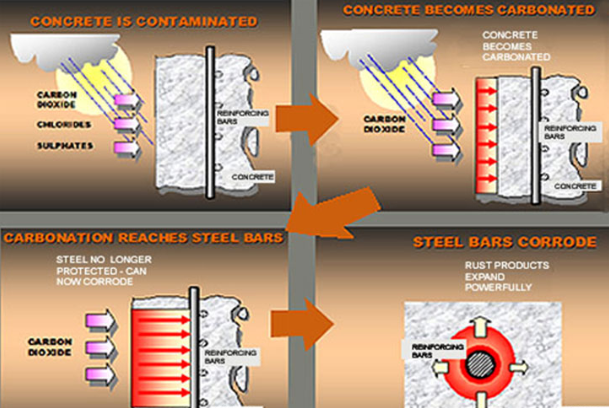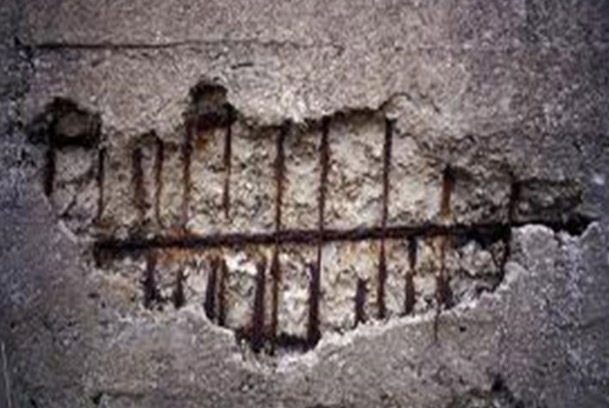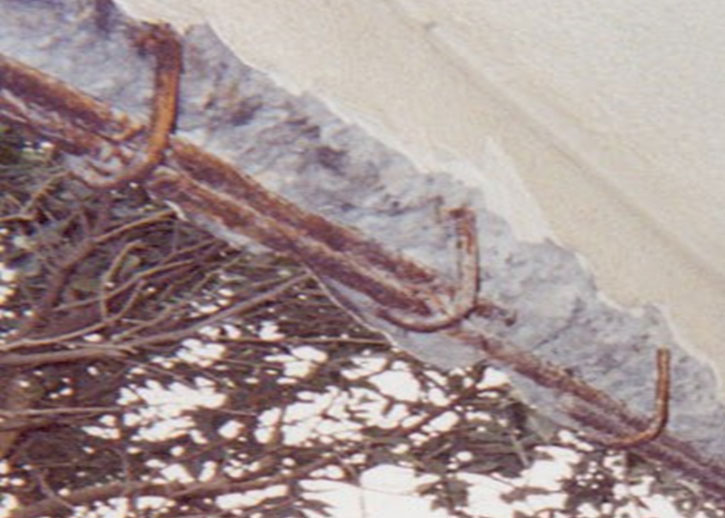
Your dream home should last for generations
use the best quality Cement.
CONCRETE CANCER – A Bane for Modern Construction Practices
In the Oxford Dictionary, the definition of concrete is described as – “A building material made from a mixture of gravel, sand, cement and water, forming a stone like mass on Hardening.”
In modern constructions practices, many defects arise in the structures. When the combination of these defects spirals into a big problem, it results in Concrete Cancer.
Concrete cancer is a colloquial name for concrete degradation caused by the presence of contaminants or the action of weather combined with atmospheric properties.

How Concrete Cancer Occurs
Causes of Concrete Cancer:
The initial cause of concrete cancer is usually water penetration. When calcium oxide reacts with water that penetrates the concrete it forms a solution of calcium hydroxide. The chemical formula for this is:
CaO(s) + H2O(l) → Ca(OH)2(aq)
Over time this calcium hydroxide solution will reach the edge of the concrete slab. When this happens the solution reacts with carbon dioxide in the air and transforms into calcium carbonate. On the top of the slab, calcium carbonate causes cracks above the slab (allowing more water penetration), and below the slab stalactites form:
Ca(OH)2(aq) + CO2(g) → CaCO3(s) + H2O(l)
When this reaction occurs in household situations, a stop leak specialist should be consulted for advice.

Concrete Cancer on Roof Tops
Treatment:
Concrete cancer can be treated in some structures. In order to effect repairs, the spilled concrete must be removed and any exposed steel must either be replaced or cleaned and treated. The area is then repaired to the original concrete profile using cement mortar, epoxy mortar or concrete, depending on the size of the damage and the structural requirements. Cracks are repaired using suitable epoxy resins, special mortars and injection techniques.
This process is referred to as 'crack injection' and may constitute a negative membrane. Negative membranes will not prevent water from entering the concrete; merely shift the water's direction through the slab. Treatment of concrete cancer must incorporate proper waterproofing or risk being a temporary solution.

Concrete Cancer in Cantilever Slabs
Major Buildings Affected by Concrete Cancer:
Australia
- Macquarie Wharf
- Brisbane City Hall
New Zealand
- Fairfield Bridge in Hamilton, New Zealand. Repaired in 1991 at a cost of NZ$1.1 million.
- Wellington Hospital Clinical Services Block in Wellington, New Zealand. Currently being repaired at an estimated cost of NZ$3 million.
For better results always use Birla A1 Premium Cement which gains superior strength due to low heat of hydration after proper curing. And watch our 2 minute video on the advantages of curing so that you can have a Happy Home Building!
 Back
Back